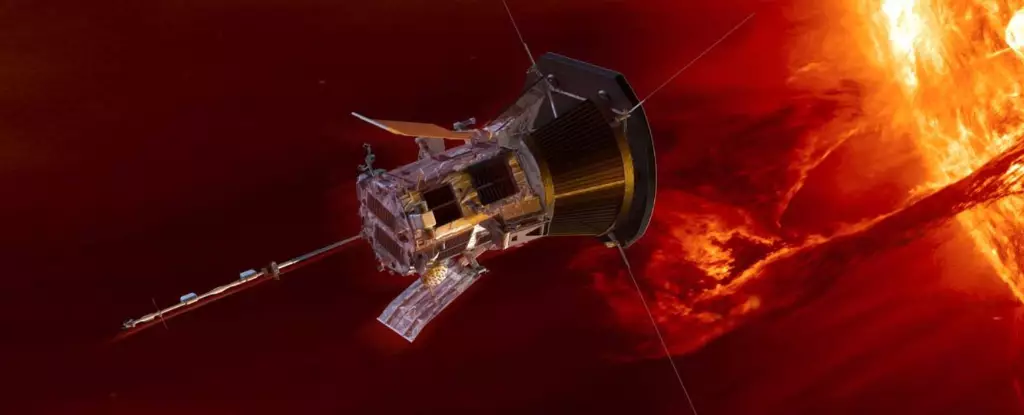NASA’s Parker Solar Probe has recently achieved a significant milestone in the realm of space exploration by flying closer to the Sun than any preceding spacecraft. On December 24, 2024, the probe approached the Sun to a staggering distance of 3.8 million miles (6.1 million kilometers). This momentous occasion marks an important chapter in our ongoing quest to understand solar phenomena that directly impact life on Earth and our technological environments. The probe, which was launched in August 2018, is designed for a seven-year mission that not only allows it to journey into the Sun’s outer layers but also to relay invaluable data back to Earth.
The Parker Solar Probe withstands extreme conditions throughout its mission. During its recent flyby, the spacecraft’s heat shield encountered temperatures exceeding 1,700 degrees Fahrenheit (930 degrees Celsius). Despite these intensities, internal systems of the probe remain remarkably insulated, with temperatures maintained at approximately 85 degrees Fahrenheit (29 degrees Celsius). This engineering marvel showcases NASA’s ingenuity and ability to craft technology capable of surviving the harshest environments known to humanity.
Adding to the intensity of the mission is the astonishing speed at which the Parker Solar Probe travels. At about 430,000 miles per hour (690,000 kilometers per hour), the spacecraft could hypothetically make the transcontinental journey from Washington, D.C., to Tokyo in less than a minute. This sheer velocity is crucial for allowing the probe to complete its trajectory and collect data in a limited timeframe. As such, every flyby and every moment spent close to the Sun represents an irreplaceable opportunity for exploration and research.
The Parker Solar Probe’s mission is not merely about proximity; it aims to unravel some of the enduring enigmas surrounding the Sun. Core questions the mission seeks to address include the origins of solar winds, the surprising heating of the solar corona, and the dynamics behind coronal mass ejections—significant bursts of plasma that can influence both space weather and conditions on Earth. By approaching the Sun and measuring these phenomena firsthand, scientists hope to glean insights that have eluded them for decades.
These scientific inquiries are not just academically intriguing; they also hold practical importance for life as we know it on Earth. Space weather can impact satellite operations, power grids, and communications, and understanding the behaviors of our star can inform preparedness for potential adverse events.
The December 24 flyby was not merely a standalone event; it is the first of a series of three closely timed approaches to the Sun. The Parker Solar Probe is scheduled to fly by again on March 22 and June 19, 2025, making history each time it draws closer. NASA’s scientists eagerly anticipate the downstream effects of these additional encounters, with hopes for increasingly robust data collection that provides further insights into our Sun’s temperament.
As the mission continues, excitement mounts not only for the results of the current flyby but for what the future may hold in terms of discoveries and technological advancements. This ambitious project exemplifies the spirit of exploration inherent to scientific pursuit and showcases humanity’s relentless endeavor to probe realms previously thought inaccessible.
The Parker Solar Probe serves as an inspiration for technology and ambition in the field of space exploration. The successful seamless communication, data collection, and resilience of the probe could pave the way for future missions aimed at other celestial bodies. As scientists celebrate this remarkable achievement and prepare for subsequent flybys, they reinforce humanity’s enduring connection to the cosmos and the quest for knowledge about our universe.
The Parker Solar Probe’s journey is an extraordinary testament to human ingenuity, offering not just a glimpse of the Sun’s mysteries but also a beacon for future explorative endeavors that could change our understanding of the universe.


Leave a Reply